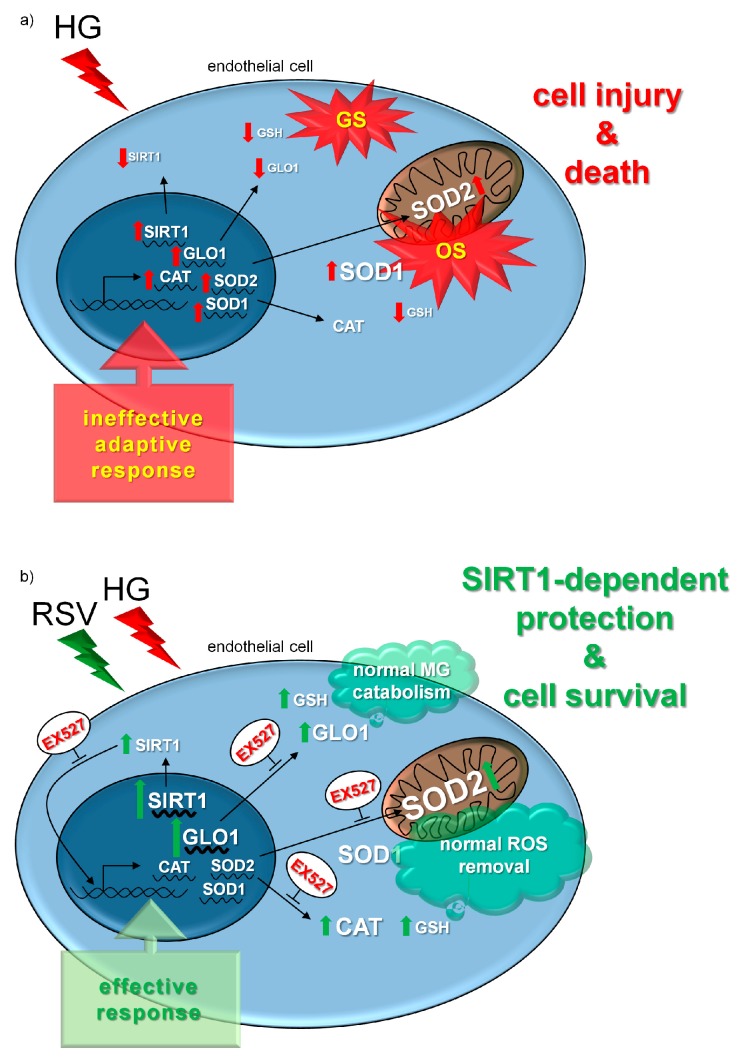Figure 7.
Synoptical interpretation of the experimental results. A 24-h treatment with HG induced both GS and OS in HUVECs by reducing SIRT1 activity, as well as by diminishing the efficiency of MG- and ROS-targeting defense. An attempt of compensation occurred at transcriptional level, however this was ineffective, as HG promoted apoptotic and necrotic cell death (a). The cytotoxic effects of HG were abolished by the co-treatment with RSV, and this was associated with transcriptionally-regulated restoration of SIRT1 activity, together with increased expression of GLO1, improved ROS-scavenging efficiency, and total suppression of HG-related GS and OS. The RSV-induced effective response to HG cytotoxicity was abolished by the specific inhibitor of SIRT1 (i.e., EX527), and this started at the level of mRNA transcription, thus suggesting that the upregulation of SIRT1 was essential for RSV to activate the major antioxidative and antiglycative defense, and avoid ROS- and MG-dependent molecular damages in a high glucose environment (b). Abbreviations: CAT—catalase; HG—high glucose; GLO1—glyoxalase 1; GS—glycative stress; GSH—reduced glutathione; OS—oxidative stress; RSV—resveratrol; SIRT1—sirtuin 1; SOD1—superoxide dismutase 1; SOD2—superoxide dismutase 2.

